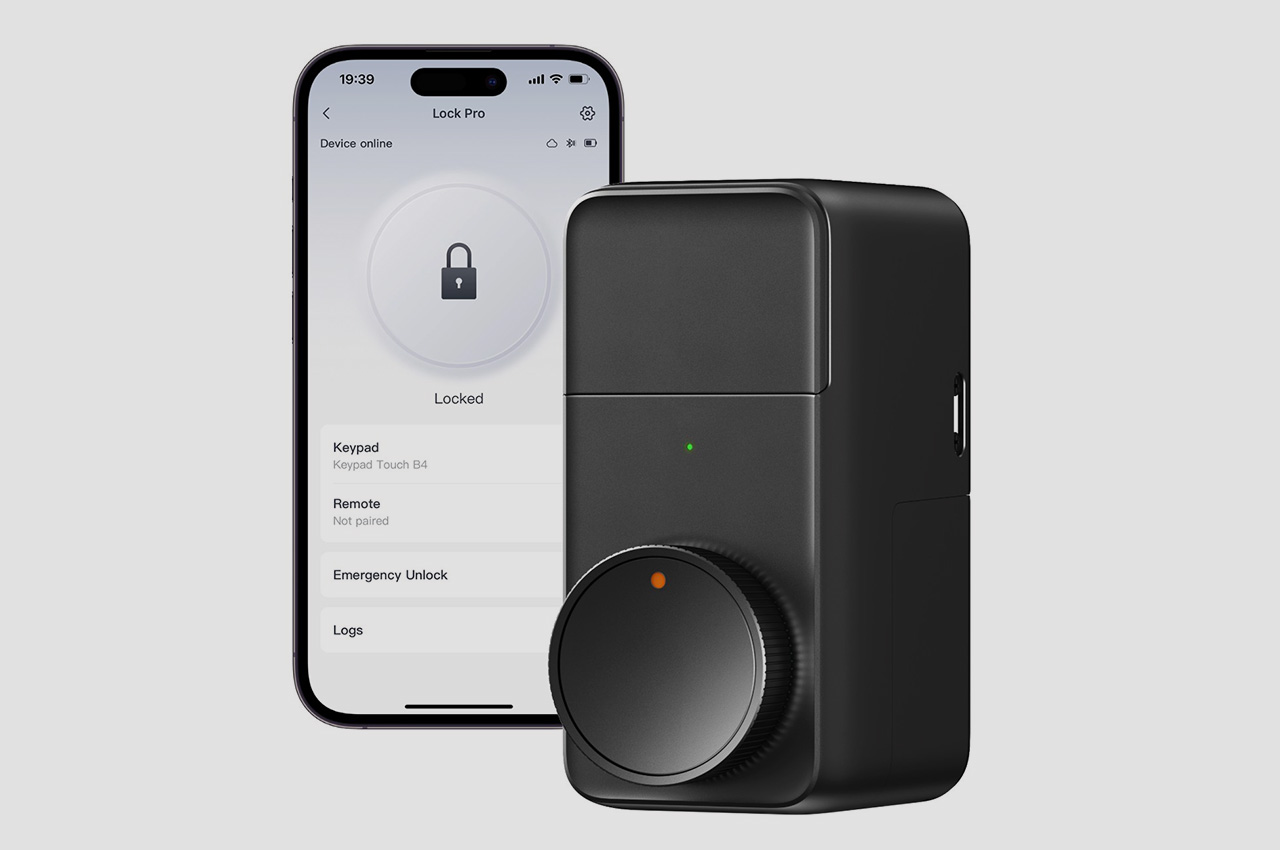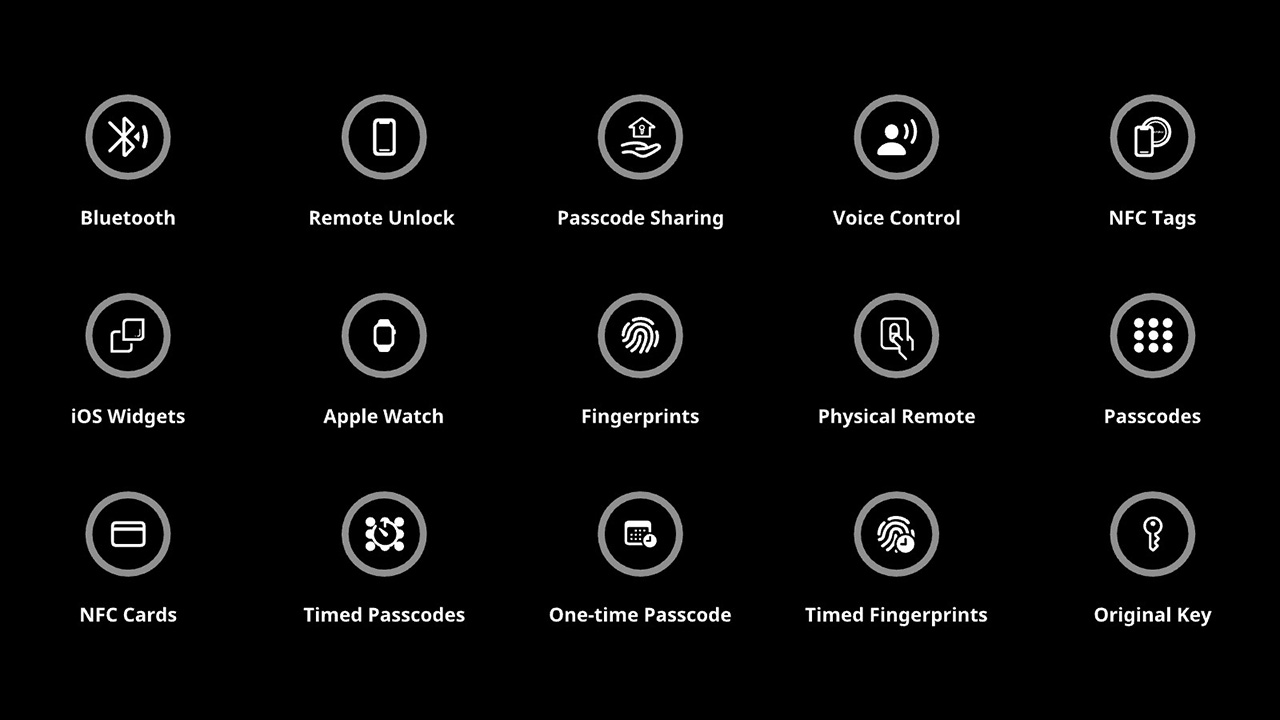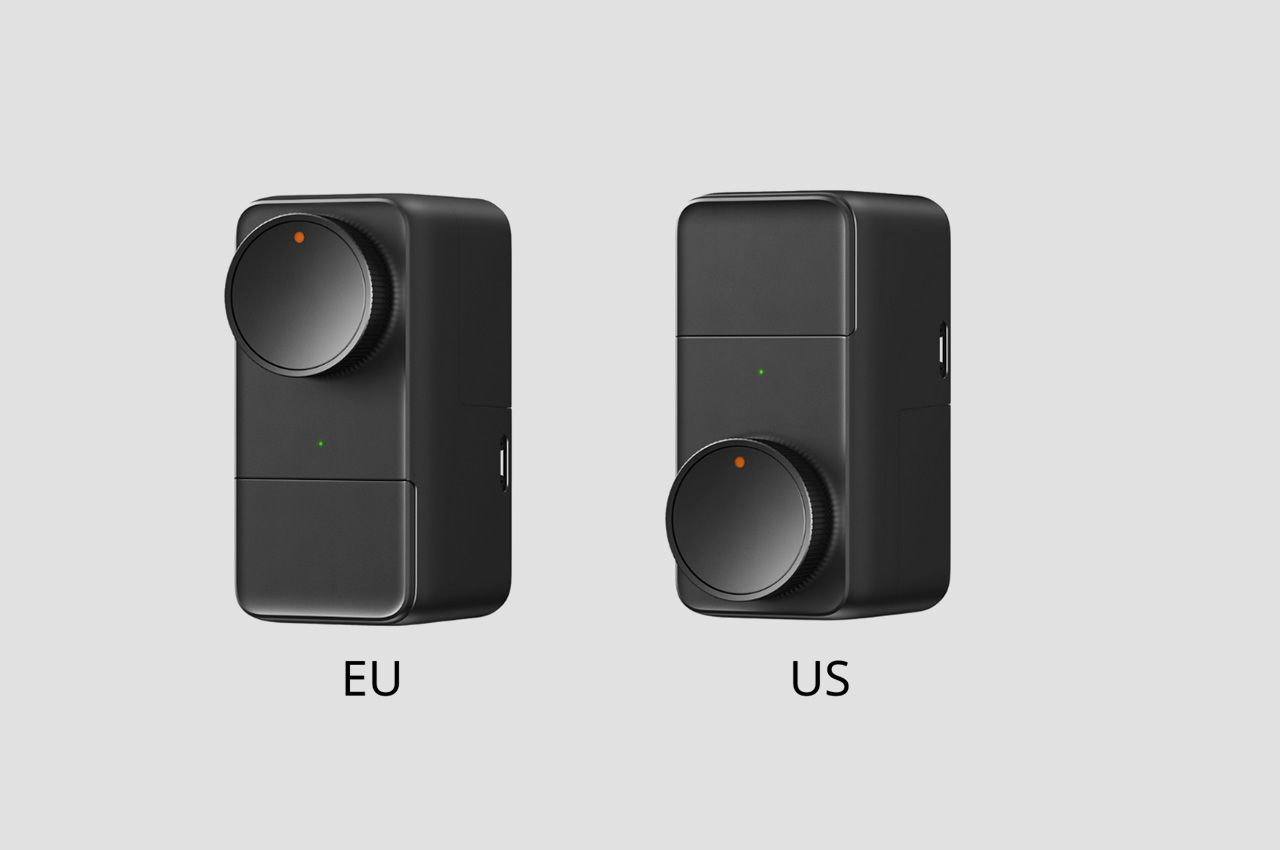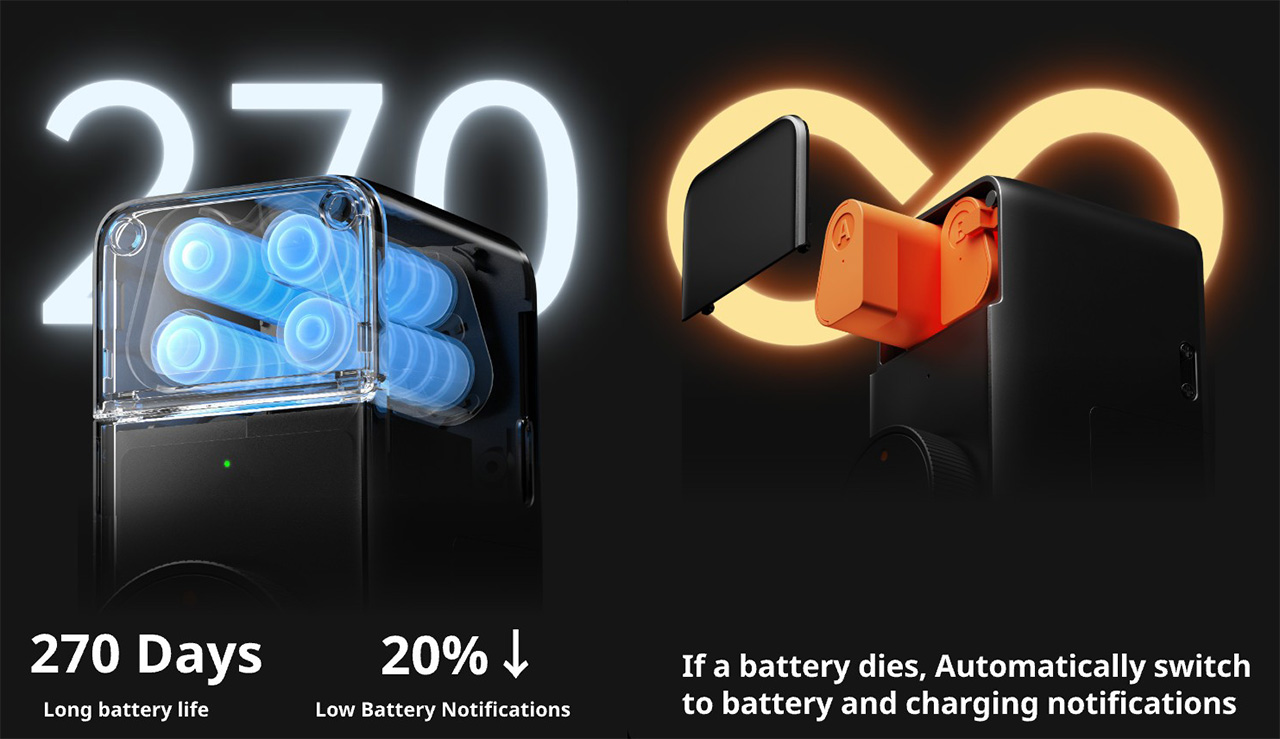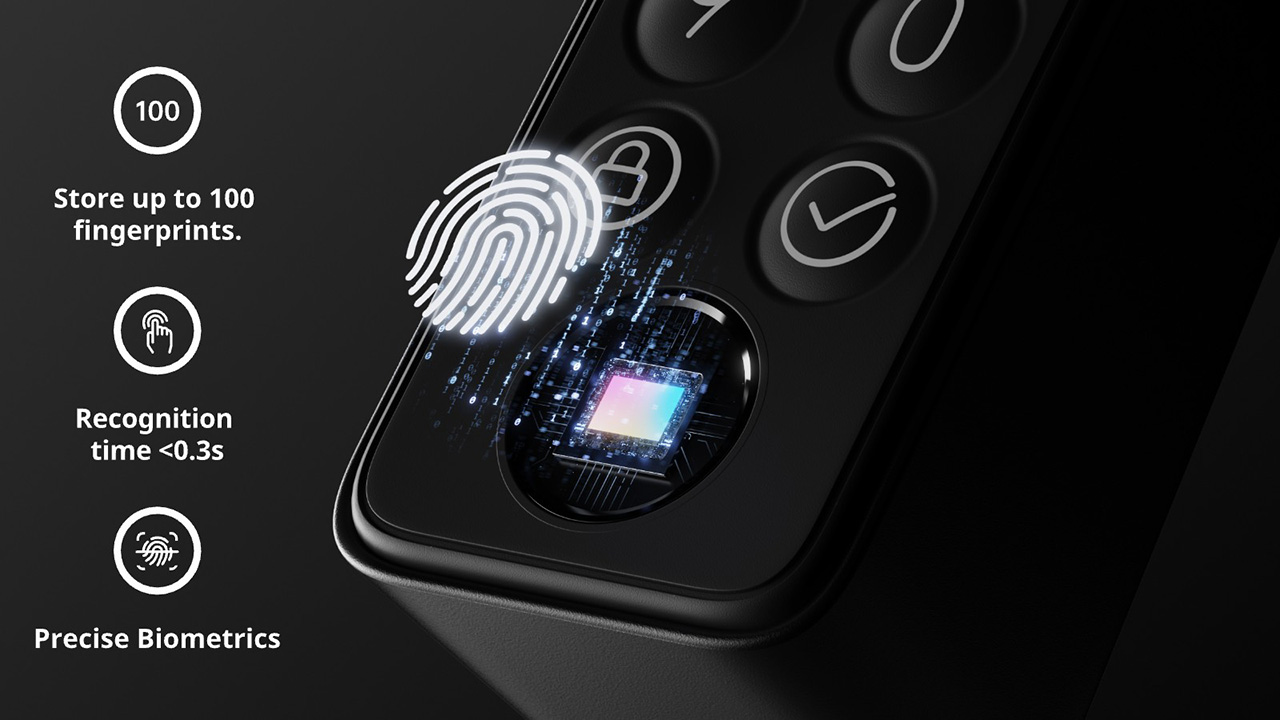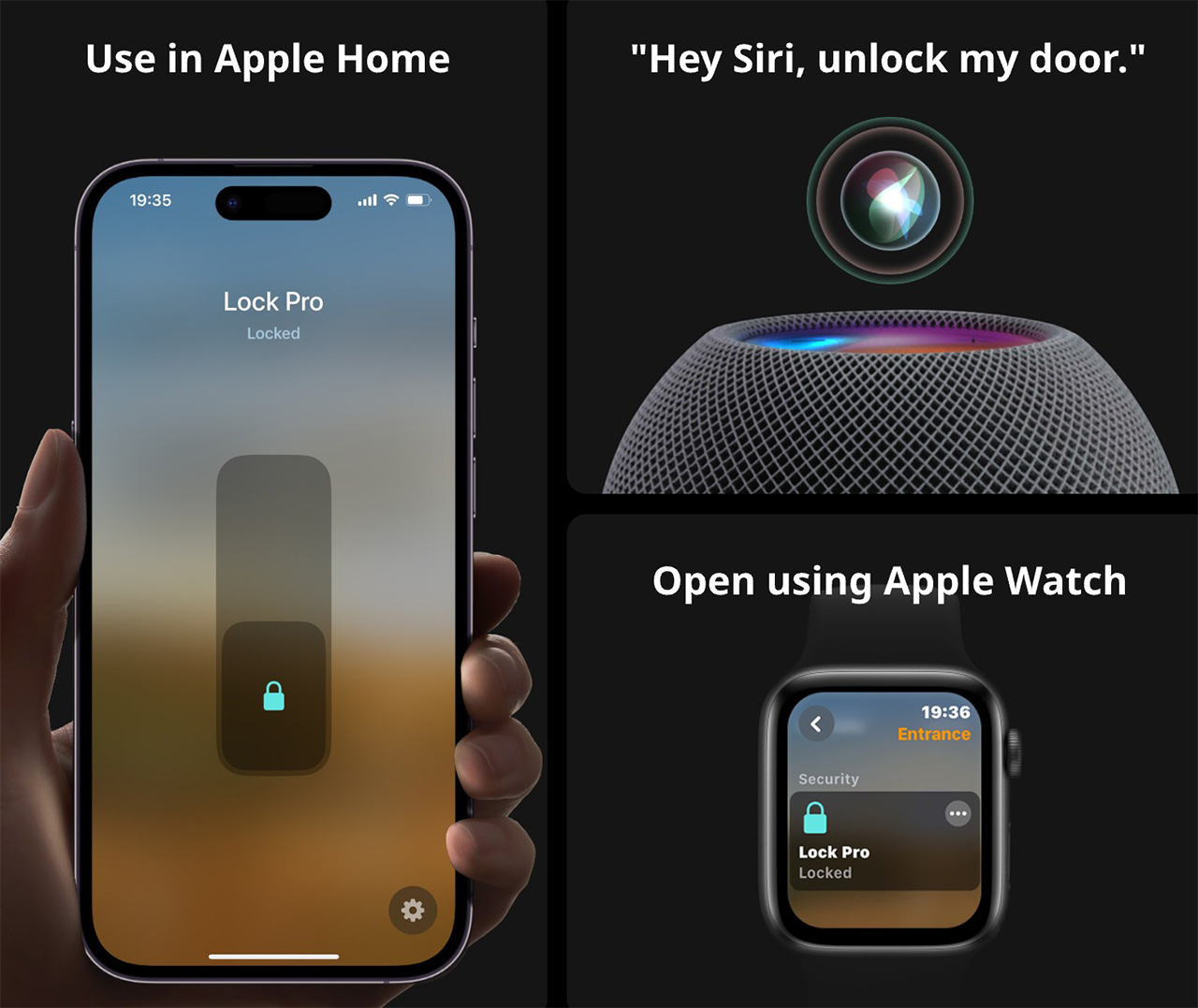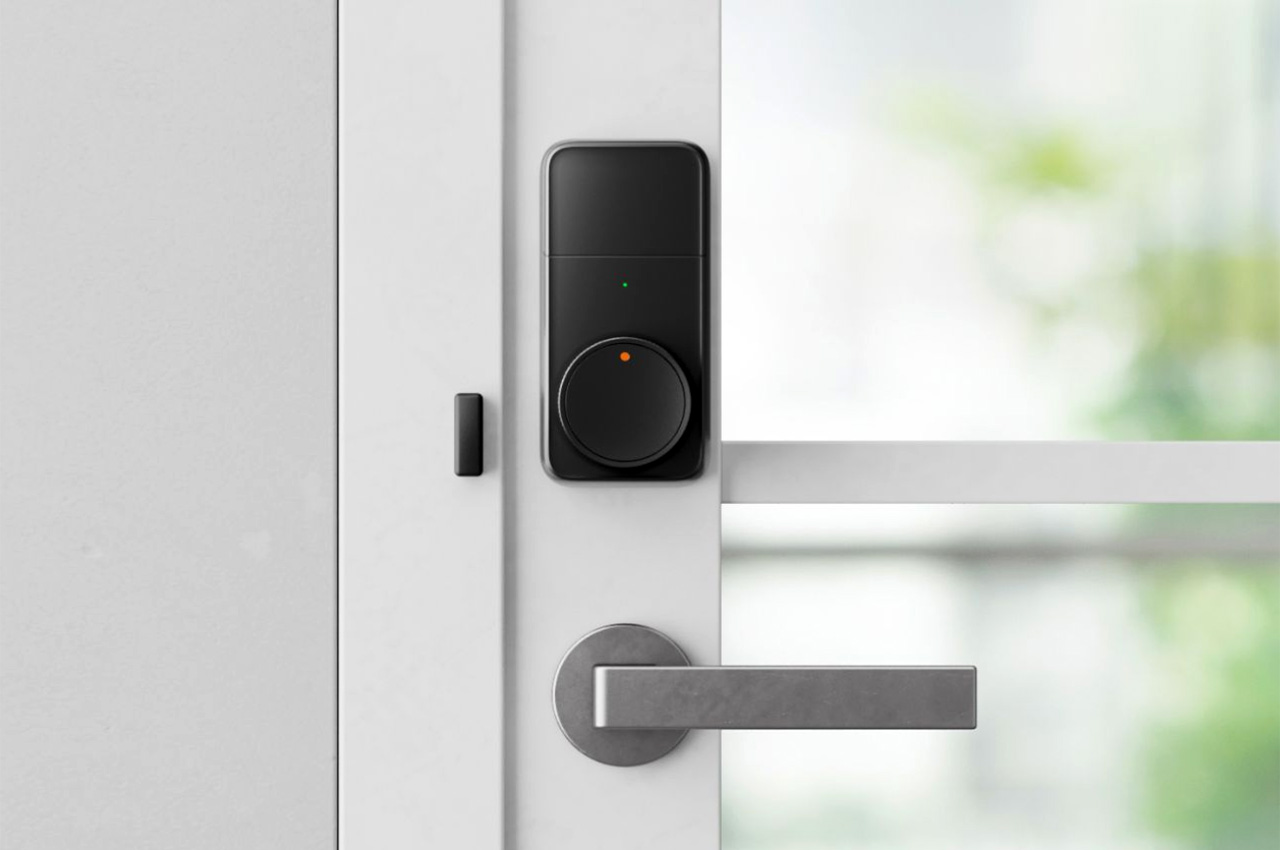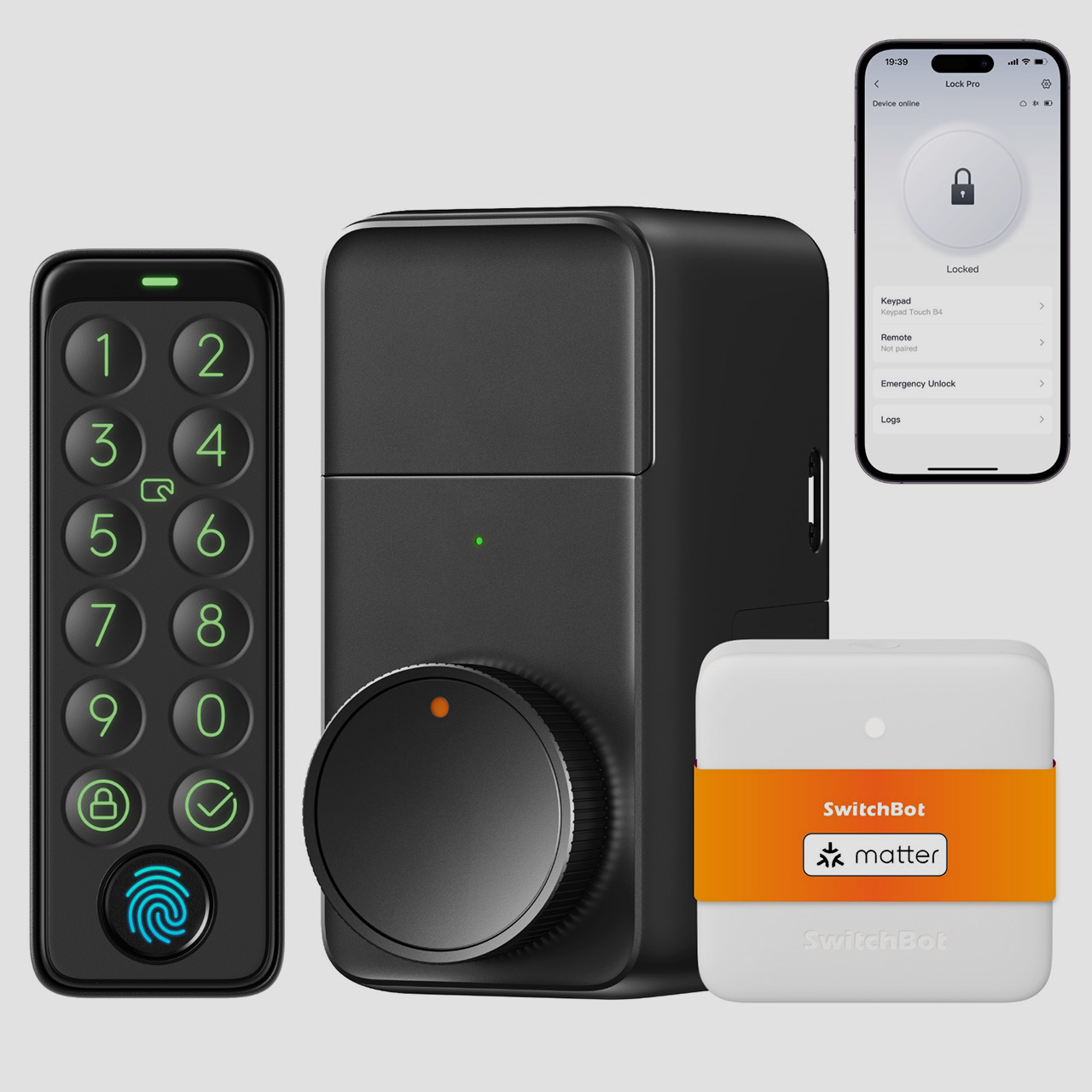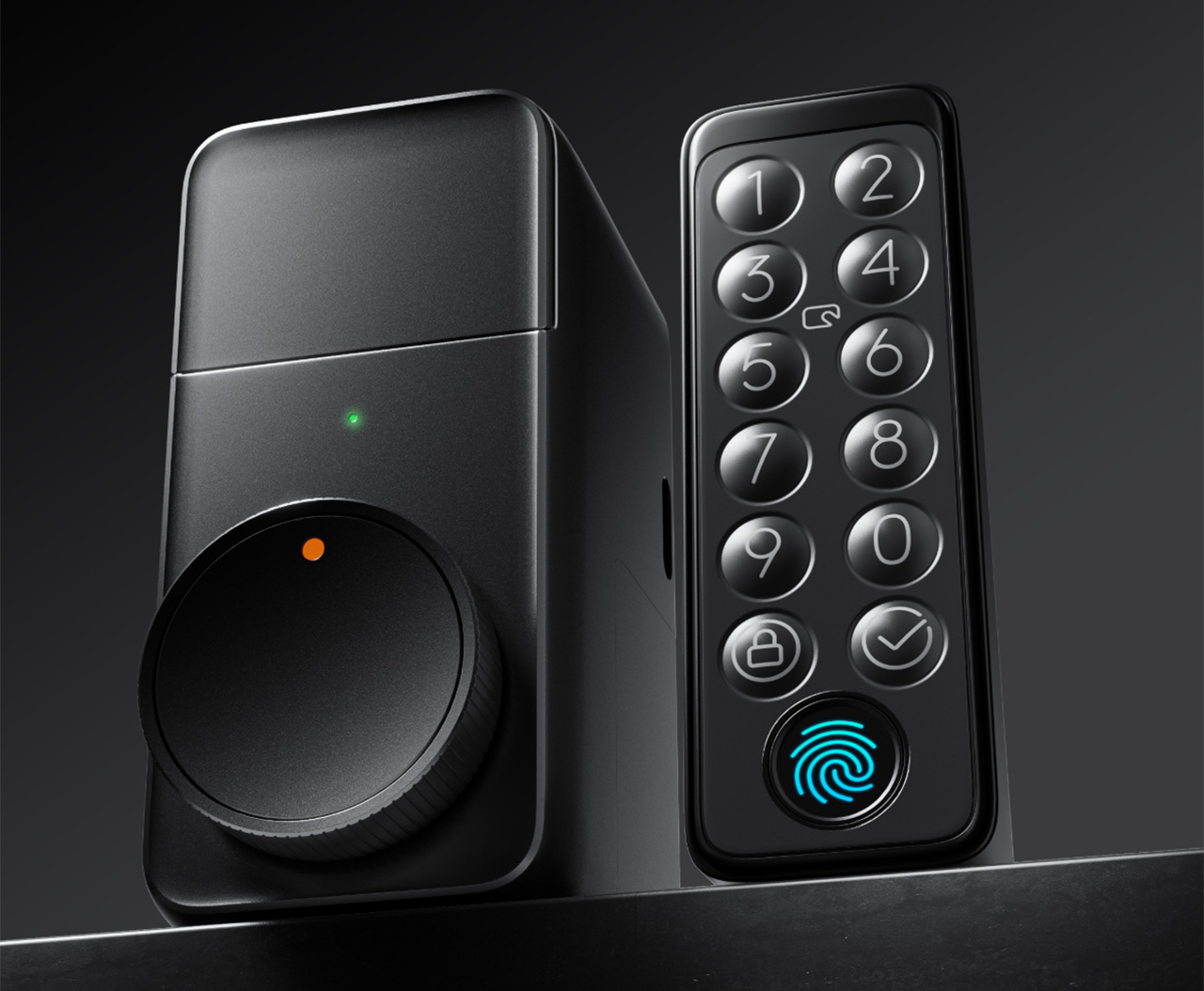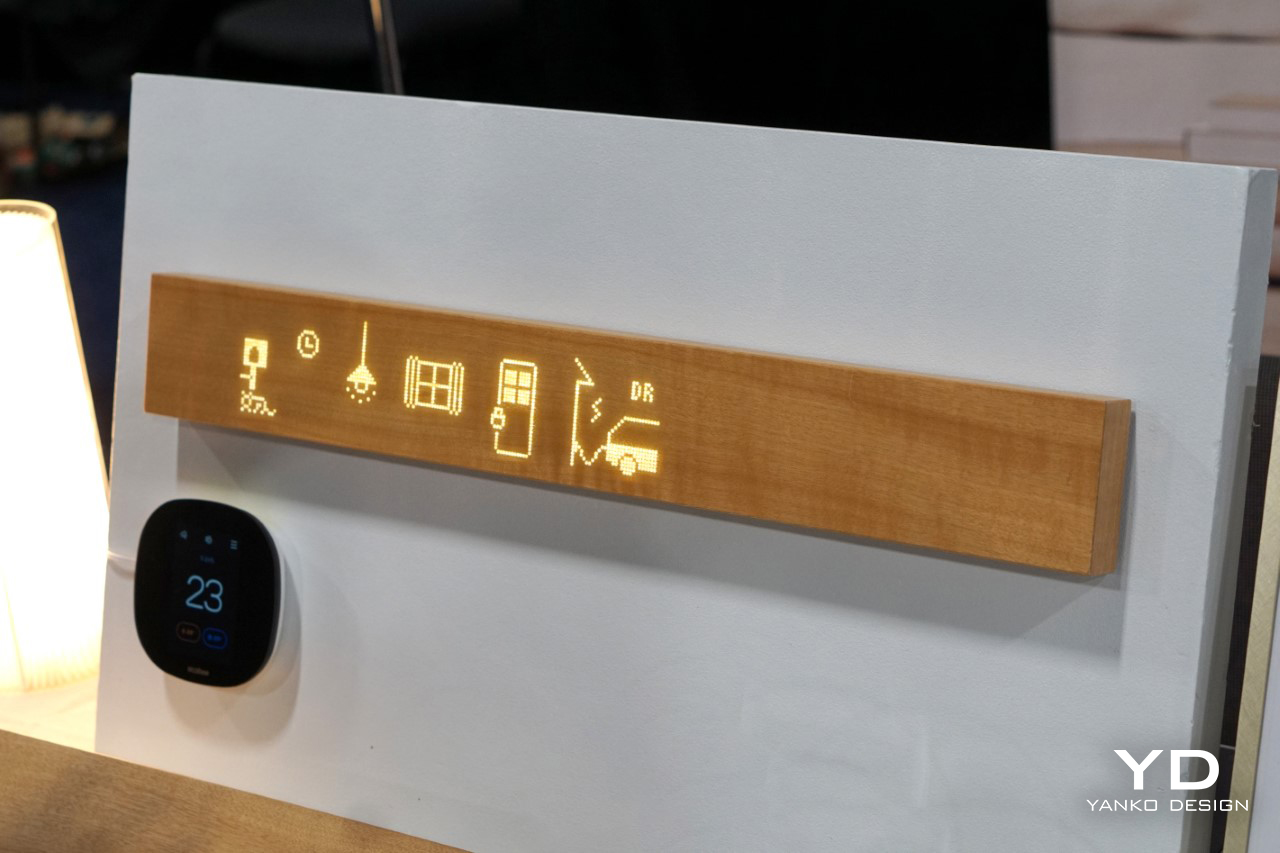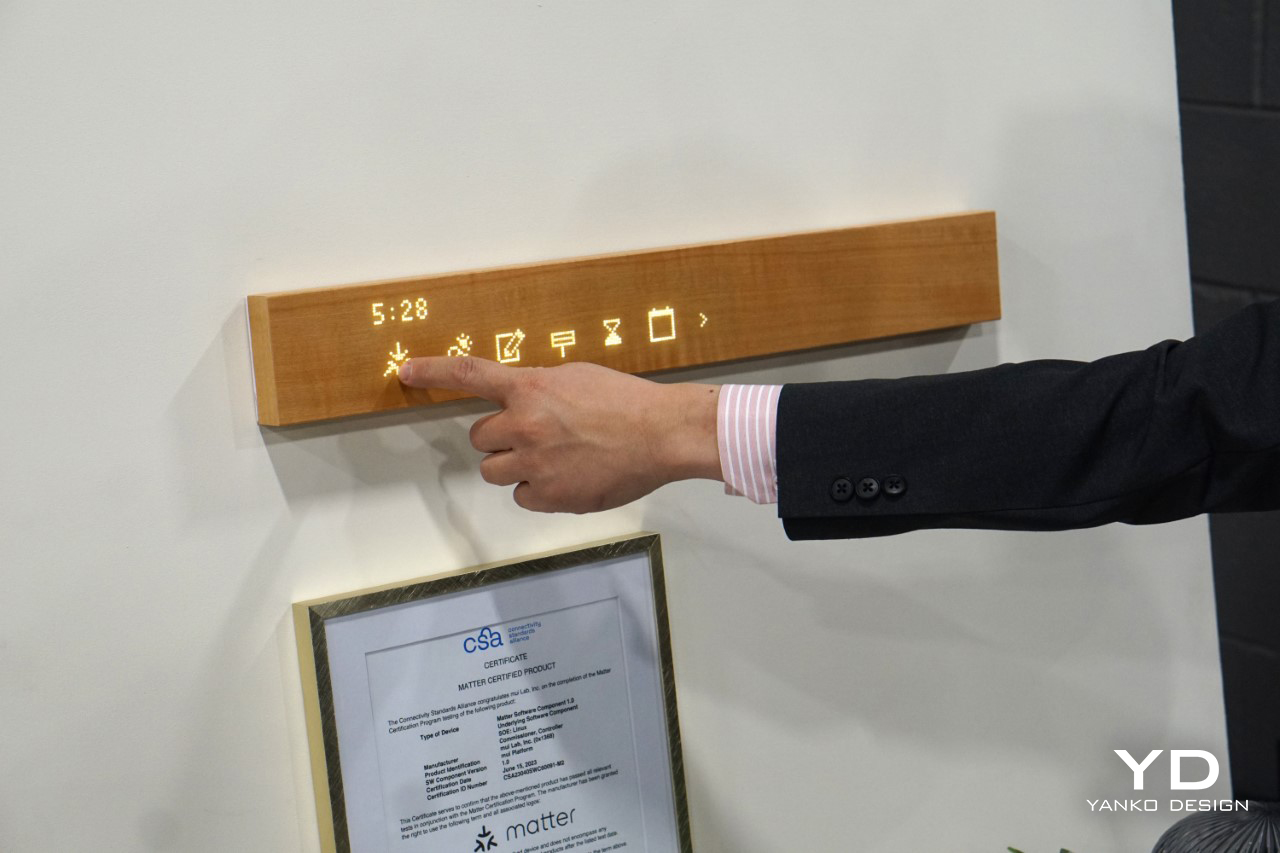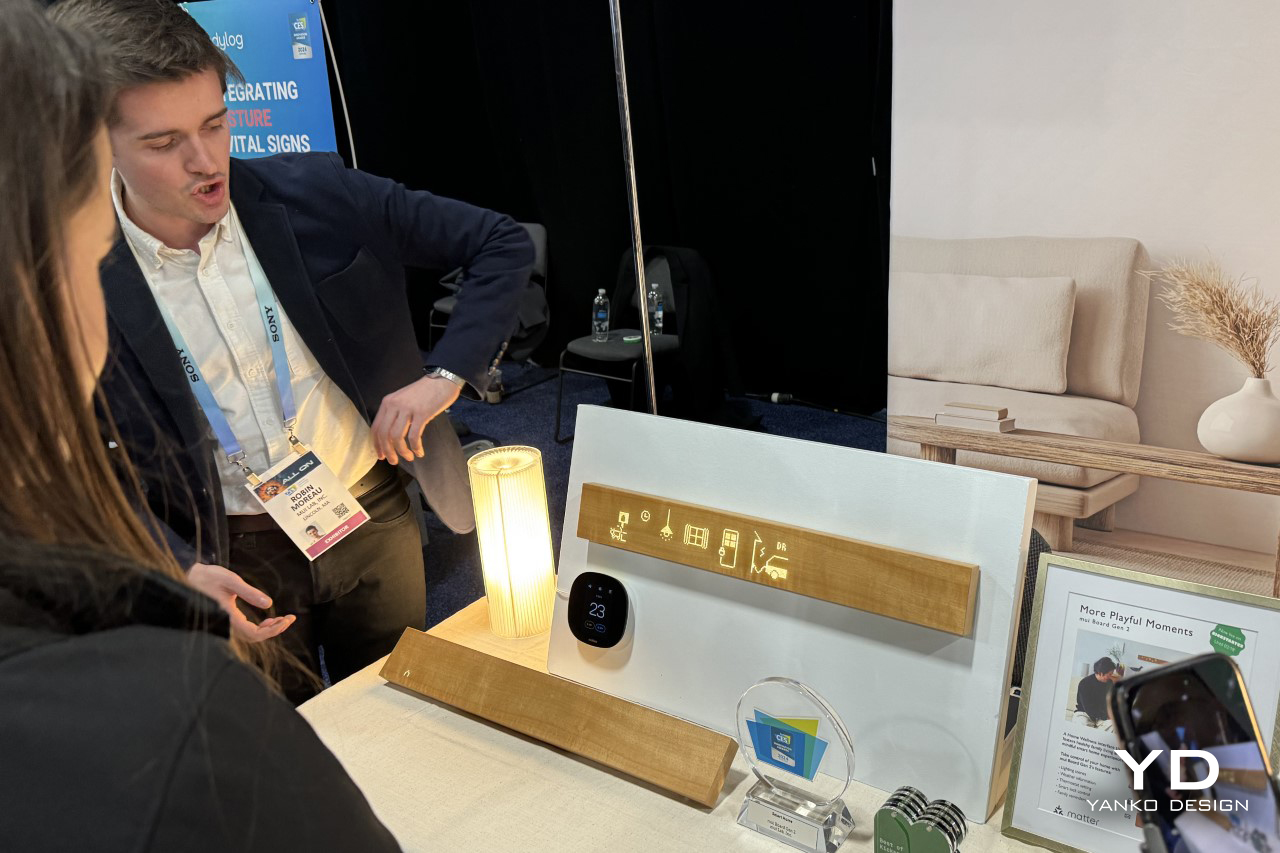It’s 2024 and if you’re bummed that you can start your EV with your mobile phone, but can’t open the door to your house with it, the folks at SwitchBot just designed the perfect little accessory. Designed to retrofit onto your existing deadbolt door lock, the SwitchBot Lock Pro has 15 different unlocking options, from letting you use your phone or Apple Watch, to voice commands, biometrics, numeric PINs, or hey, even your regular key if you’re feeling a little old-fashioned. Or maybe get it to unlock when you say “Open Sesame” if you’re feeling extra whimsical!
Designer: Switchbot
Click Here to Buy Now: $89.99 $119.99 (Use Coupon Code on the Site to get $30 off). Hurry, deal ends soon!
The Lock Pro follows in the footsteps of the original SwitchBot Lock, which retrofitted onto deadbolt locks to turn them into smart IoT locks. The new Pro variant still transforms deadbolt locks into smart ones, but comes with a sleeker design that integrates right into your door frame, a higher torque output that unlocks and locks doors with absolute ease, and even the inclusion of a number pad and biometric sensor that lets you unlock doors with a PIN or your fingerprint. There’s a minimal amount of assembly, the Lock Pro runs on replaceable AA batteries, and it also supports the Matter IoT protocol which means the Lock Pro can seamlessly communicate with all your other smart home devices, whether they’re from Google, Apple, Amazon, or any other third party company running on the Matter protocol.
Designed with both American and European markets in mind, this retrofit smart lock integrates seamlessly into existing hardware, supporting all common deadbolt locks. Installation is a breeze, taking a mere 5 minutes – for US deadbolts, SwitchBot Lock Pro comes equipped with tailored adapters that allow for effortless cylinder changes, while European users can opt for different mounting plates based on the protrusion of their cylinder. This ingenious design eliminates the need for complex DIY modifications, making the transition to a smart lock a minimal-effort experience without any specialist tools or even requiring calling a handyman. You visit SwitchBot’s website to check whether the Lock Pro is compatible with your door lock for the US or the EU.
At the core of the SwitchBot Lock Pro lies an upgraded motor that boasts an impressive 20 kgf/cm² of torque – more than double the force of its predecessor. This increased power ensures smooth operation, even with multiple locks, and faster unlocking times, providing effortless entry every time. Whether you’re a tenant, apartment resident, or a smart home enthusiast, the SwitchBot Lock Pro is a must-have addition to your connected living space.
In essence, the Lock Pro builds on the sheer elegance of its predecessor, which allowed wireless locking and unlocking using Bluetooth devices like your phone or Apple Watch, or through smart home commands via the SwitchBot Hub. Retaining those existing features, the Lock Pro adds a few more for good measure, including a numeric keypad that sits on the outside, allowing residents (or any of your guests) to enter the house with a bespoke PIN code. Aside from the keypad, the SwitchBot Lock Pro sports a biometric sensor too, with a lightning-fast fingerprint recognition time of just 0.3 seconds. It can store up to 100 fingerprints and supports virtual passwords, emergency passwords, and fingerprints for enhanced security.
With up to 15 unlocking solutions available, including one-time passcodes, expiration passcodes, remote unlocking, voice unlocking, and Apple Watch unlocking, the SwitchBot Lock Pro offers a variety of usage methods that cater to pretty much all kinds of people whether they’re tech-savvy or tech-averse. Yes, you can still use your regular key, just in case you’re wondering! Support for Matter means your Lock Pro can also communicate with all your smart home devices, allowing you to remote lock/unlock your door or even set up routines (like automatically locking all doors after midnight). The Lock Pro, however, still requires the use of SwitchBot’s Hub to communicate via WiFi with other devices.
The SwitchBot Lock Pro runs on standard 4 x AA batteries, offering an impressive battery life of 6-9 months, 1.5 times longer than other retrofit smart locks. An optional SwitchBot Dual Power Pack offers an eco-friendly alternative to standard single-use batteries, with a rechargeable design and an ingenious relay power system that ensures uninterrupted use by letting you hot-swap one battery pack at a time while the Lock Pro runs solely on the second battery pack while one of them charges. Additionally, the Lock Pro features passive power supply unlocking, allowing access even if battery replacement is delayed.
Employing AES-128-CTR encryption at the software level, the Lock Pro provides robust protection against potential virtual threats. On the hardware front, the lock sports an auto-lock feature that utilizes a magnetic sensor, ensuring heightened safety and reliability by automatically securing the door based on its open/closed state, and surpassing the effectiveness of timer locks. Users can stay informed with real-time updates on lock and door statuses via their phones, and receive automatic reminders, ensuring peace of mind with every exit.
This isn’t SwitchBot’s first IoT rodeo – the company’s product roster features both standard as well as creative IoT devices like their award-winning curtain-opening robot, the button-pusher that turns regular switches into smart ones, and the Meter – a temperature and humidity sensor that lets you ensure every room in your house is at the right environment setting. The Lock Pro is a perfect addition to SwitchBot’s ecosystem, advancing their existing Lock product with newer features and more unlocking methods including keypad and fingerprint-based input. Whether you’re a family seeking convenience and security, an Airbnb host managing guest access, a fitness enthusiast with hands full of groceries, or a smart home aficionado seeking seamless integration, the SwitchBot Lock Pro offers a tailored solution. From fingerprint unlocking for family members to remote guest access for hosts, quick access for post-workout arrivals, and automated routines for smart home enthusiasts, the Lock Pro quite literally ‘unlocks’ a whole world of possibilities!
Click Here to Buy Now: $89.99 $119.99 (Use Coupon Code on the Site to get $30 off). Hurry, deal ends soon!
The post SwitchBot’s new smart lock opens with voice commands, fingerprints, passcodes, and even your Apple Watch first appeared on Yanko Design.
